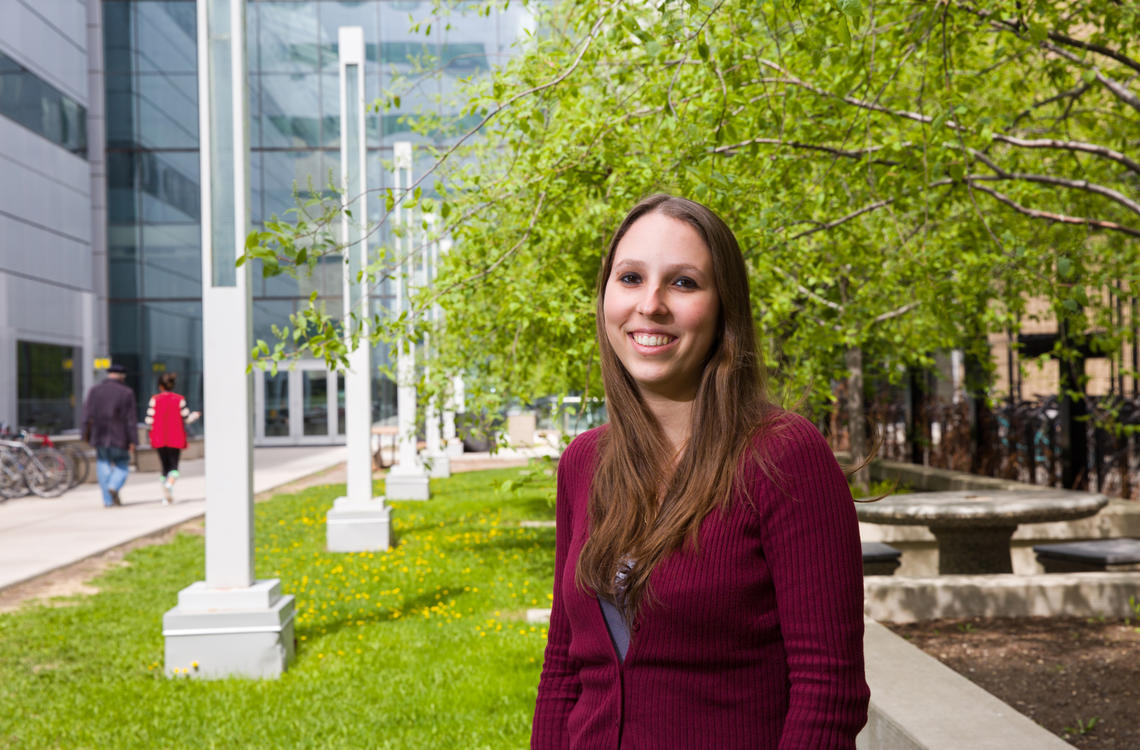May 18, 2017
Vet med scholars share science in the remote Arctic

This series celebrates University of Calgary community-partnered outreach projects as part of Science Odyssey, Canada’s largest celebration of discovery and innovation and for the way science shapes our daily lives.
Their families share the Arctic tundra with muskoxen and often hunt them for food. And now students in two remote northern communities have learned more about the species’ health, a parasite that lives in their lungs, and several emerging diseases that are causing drastic declines in muskox populations.

Dr. Fabien Mavrot visited the Helen Kalvak Elihakvik School in Ulukhaktok, NWT
Four researchers from the Faculty of Veterinary Medicine (UCVM) who study the health and parasites of muskoxen have spent time in local classrooms sharing some of their knowledge. The outreach in the remote schools is part of the latest round of NSERC's PromoScience awards, announced on May 12. The program supports hands-on learning for young students.
“It was a lot of fun doing lab activities with the kids,” says Dr. Juliette Di Francesco, a veterinarian and PhD student in the Department of Ecosystem and Public Health who studies the vulnerability and resilience of muskoxen in and around Kugluktuk, in western Nunavut. “Everybody was really engaged.”

Dr. Juliette Di Francesco, a veterinarian and a UCVM PhD student
Students got 'up close and personal' with lungworm larvae, worms
As well as showing the junior and senior high school students how to identify the age and sex of muskoxen, she taught them about the muskox lungworm and had the students extract the worm’s larvae from muskox feces. “We collected the larvae and observed them under the microscope to examine their morphology,” she says.
The students also got up close and personal with nodules found in the lungs of muskox and containing adult worms. “The kids had to cut out the nodules and they had a sort of competition to see which group managed to find the most nodules and the biggest ones,” says Di Francesco, who worked with UCVM PhD candidates Chimone Dalton and Matilde Tomaselli on the outreach program.
High school students further north in Ulukhaktok, on the west coast of Victoria Island, N.W.T., also learned how and why researchers monitor the health of muskoxen. “I was quite impressed with how keen the students were,” says Dr. Fabien Mavrot, a veterinarian and postdoctoral fellow in UCVM’s Department of Ecosystem and Public Health. “They already had a lot of understanding about the health of the animals. I think they enjoyed not sitting in a classroom but putting on some gloves and then looking in the microscope to see parasites.”
Program promotes understanding of science, engineering for under-represented youth
The PromoScience program is aimed at promoting an understanding of science and engineering for under-represented youth. Di Francesco, Mavrot, Dalton and Tomaselli (who study with Dr. Susan Kutz, professor in the Department of Ecosystem and Public Health) collaborated with each school’s science teacher as well as local wildlife officers and biologists.
It may be years before the researchers can know whether their time in the remote Arctic classrooms will encourage any of the dozens of students they met to enter a career in science. “If you can give some students a bit of an overview of why it’s important and what it’s like to work in wildlife health and research,” says Mavrot, “it’s a good thing.”
Powered by NSERC, Science Odyssey is Canada's largest celebration of science, technology, engineering and mathematics, featuring fun and inspiring experiences in museums, research centres, laboratories and classrooms from coast to coast. To learn more about UCalgary Science Odyssey events, read our UToday story, and browse the full list of special Science Odyssey events here.
